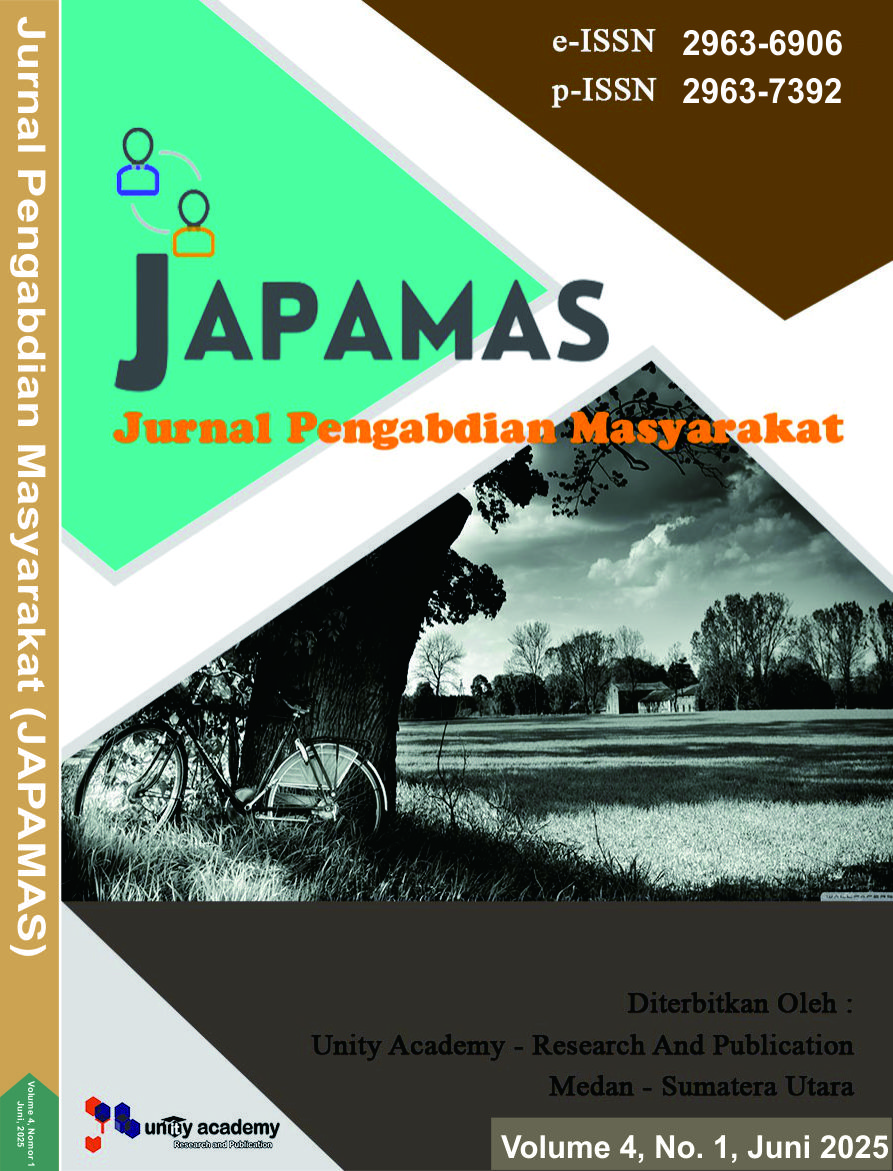Peningkatan Kualitas Pembelajaran Matematika Mahasiswa Berbantuan Python SciPy
DOI:
https://doi.org/10.70340/japamas.v4i1.227Kata Kunci:
Mathematics Learning, Python SciPy, Improving UnderstandingAbstrak
The Community Service Program is a collaboration between Harapan Bersama Polytechnic and Tegal The Community Service Program is a collaboration between Harapan Bersama Polytechnic and Baja Polytechnic Tegal, driven by the need for a more practical and technology-based approach to mathematics education. Students still face challenges in understanding abstract concepts, while the use of scientific computing technologies such as Python and SciPy has not yet been fully integrated into the learning process. This training program is designed to enhance students' understanding through a practical, programming-based approach, covering topics from the basics of Python programming to the application of SciPy in mathematical modeling and problem-solving. The activities are conducted in a participatory manner, encouraging students to actively explore and test concepts directly through digital simulations. Assessment results show significant improvement: students' average scores increased from 50 on the pre-training test to 76 on the post-training test, representing a 52% increase. In addition to quantitative improvements, students also reported tangible benefits in understanding the material and building confidence in using technology in learning. This training demonstrates that the appropriate integration of technology can be an effective solution for enhancing the quality of mathematics education in vocational education settings such as the Baja Polytechnic Tegal.
Unduhan
Referensi
S. Fitri, A. Habibie, and K. Akademik, “IMPLEMENTASI BAHASA PEMROGRAMAN PYTHON UNTUK ANALISIS Abstraksi Penelitian ini bertujuan untuk menerapkan bahasa pemrograman python dalam menganalisis,” vol. 9, no. 1, pp. 865–879, 2025.
R. D. Pratama et al., “Penerapan Distribusi T-Student Untuk Penaksiran Interval Pada Data Sampel Kecil Menggunakan Python Application Of T-Student Distribution For Interval Estimation On Small Sample Data Using Python,” vol. 1, 2024.
N. A. Fortune, A Short Guide to Using Python For Data Analysis In Experimental Physics. 2021.
M. T. Qurohman, Z. Wijayanto, and S. Suwarto, “Investigating Critical Thinking Indicators in the Context of Algebra Problem Solving : A Study in Indonesia,” vol. 7, no. 2, pp. 99–110, 2025.
M. T. Qurohman, “Development of The Learning Model Group Investigations Based Academic Culture ( GIBAC ),” 2025.
P. Szyma and T. Kajdanowicz, “scikit-multilearn: A scikit-based Python environment for performing multi-label classification,” vol. 1, pp. 1–15, 2016.
A. Ankan and A. Panda, “pgmpy : Probabilistic Graphical Models using Python,” no. Scipy, pp. 6–11, 2015.
M. T. Qurohman, “Meningkatkan Kemampuan Pemecahan Masalah Kalkulus Lanjut Melalui Pembelajaran Kooperatif Tipe Co-Op Co-Op,” Cakrawala J. Pendidik., vol. 11, no. 1, p. 32, 2017, doi: 10.24905/cakrawala.v11i1.664.
M. T. Qurohman, P. P. Nugraha, S. A. Romadhon, and S. F. Ahmad, “The influence of model of eliciting activities on improving mathematical problem-solving ability,” vol. 5, no. 2, pp. 141–146, 2022.
T. Bonald, N. De Lara, Q. Lutz, and B. Charpentier, “Scikit-network : Graph Analysis in Python,” vol. 21, pp. 1–6, 2020.
H. Hendriana, U. R. Slamet, and U. Sumarmo, “Mathematical Connection Ability and Self-Confidence (An experiment on Junior High School students through Contextual Teaching and learning with Mathematical Manipulative),” Int. J. Educ., vol. 8, no. 1, pp. 1–11, 2014, [Online]. Available: https://ejournal.upi.edu/index.php/ije/article/view/1726
M. T. Qurohman, “WEB ENGLISHCLUB . COM BAGI SISWA SMK ASTRINDO TEGAL Syaefani Arif Romadhon Johan Firmansyah PENDAHULUAN Grammar atau tata bahasa Inggris merupakan hal yang menakutkan bagi sebagian siswa karena seringkali d ijuluki sebagai “ matematika -nya bahasa Inggris,” vol. II, no. 1, pp. 102–107, 2020.
T. T. Santos, “SciPy and OpenCV as an interactive computing environment for computer vision,” 2015.
“Processing of air flow measurement results using the python scipy library,” pp. 16–17, 2023.
T. E. Oliphant, “SciPy Tutorial,” no. October, pp. 1–42, 2004.
A. Rayhan and R. Kinzler, “Advancing Scientific Computing with Python ’ s SciPy Library,” pp. 1–19.
L. O. Sari, R. Z. Hidayatullah, U. Riau, S. Baru, and K. Pekanbaru, “PENGEMBANGAN FIREWALL SEDERHANA BERBASIS PYTHON,” vol. 2, no. 12, 2024.
M. T. Qurohman, M. S. Sungkar, T. Abidin, and H. B. Polytechnic, “Development of Mathematics Learning Application Based on,” vol. 06, no. 02, 2019.
Unduhan
Diterbitkan
Terbitan
Bagian
Lisensi
Hak Cipta (c) 2025 M. Taufik Qurohman, Ali Wardana, Syaefani Arif Romadhon

Artikel ini berlisensiCreative Commons Attribution-ShareAlike 4.0 International License.







